Rosemary and mint are beneficial for the hair and are perfect to use in a shampoo bar recipe. Learn how to make these homemade rosemary mint shampoo bars – they smell amazing, and are a wonderful herbal beauty care product!
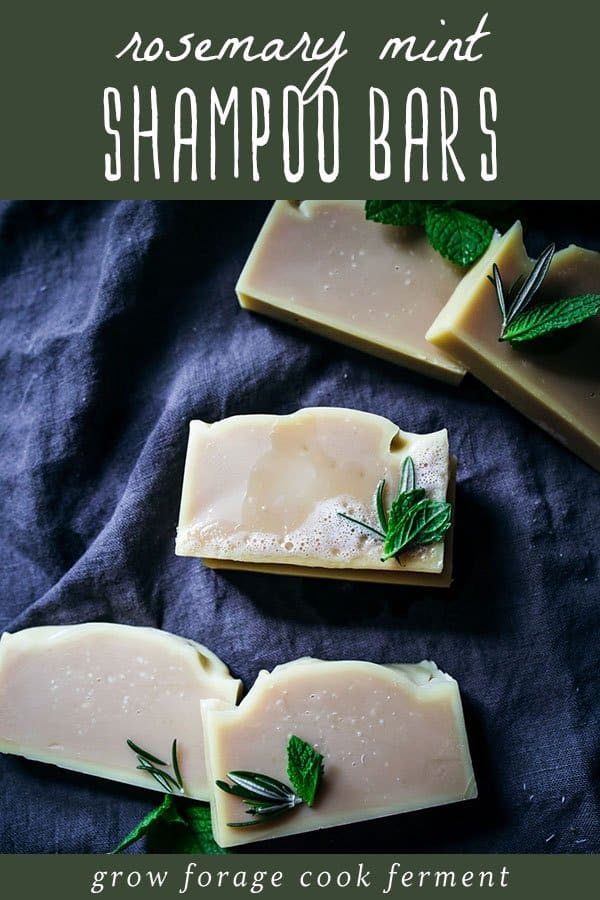
Want to save this post for later?
Homemade Shampoo Bars
I love making my own homemade herbal bath and beauty products, and this shampoo bar recipe is no exception!
Making homemade soap was the one thing that I didn’t do for a long time, admittedly because I was a little scared of the whole process. But when I finally did it, I realized it wasn’t really that bad.
Since I’ve started to make soap, I’ve also become interested in making shampoo bars. The process is the same as soap, but with different ingredients that are good for healthy hair.
I’m sure you will love these homemade rosemary mint shampoo bars!
How to Make Rosemary Mint Shampoo Bars
This recipe for rosemary mint shampoo bars comes from Jan Berry’s (of the Nerdy Farm Wife blog) Handmade Natural Soaps eBook Collection and she has been so kind to let me to share it with you!
She also offers a bundle that includes the ebook collection and a soapmaking course. I highly recommend these resources, especially if you are new to making soap or shampoo bars!
Shampoo Bar Ingredients
My favorite place for buying carrier oils, essential oils, and dried herbs for soap making is Mountain Rose Herbs.
I get the lye from Essential Depot. Lye is necessary for making these shampoo bars, but it’s not something to worry about too much. All soap is made with lye, or else it wouldn’t be soap! While you do need to be careful while handling it, there is no lye left in the final soap product due to the saponification process.
For a more detailed list of equipment, or if you are new to making soap, please see my post on how to make soap for beginners, or get Jan’s Natural Soapmaking eBook package.
It goes into much more detail on the whole process and makes it all really clear for people who are just starting out.
Before you Start: Make the Rosemary Infused Oil
The first step to making this shampoo bar recipe is to make rosemary infused oil.
Infuse about one cup of olive oil with ¼ cup of dried rosemary in a cool and dark place for at least 2 weeks (or use the quick heat method on the stovetop if you prefer).
After the oil has infused and when you are ready to make the shampoo bars, strain out the rosemary through a fine mesh sieve.
Make the Peppermint Tea
When you are ready to make the shampoo bars, make peppermint tea.
To make the tea, steep one tablespoon of dried peppermint in one cup of boiling water for 15-20 minutes. Let it cool to room temperature and strain before using.
Make the Shampoo Bars
Wearing gloves, goggles, and long sleeves, weigh the cooled peppermint tea into a heatproof pitcher.
Weigh the lye next, then carefully sprinkle and stir it into the tea. Set the solution aside in a safe place to cool.
Let the lye solution cool for 30 to 40 minutes so the temperature drops to around 100 to 110°F (38 to 43°C).
Measure out the oils by weight. Weigh and melt the coconut oil, then combine it with the other oils. This should bring the temperature of the oils up to somewhere around 90 to 100°F (32 to 38° C).
If needed the oils can be warmed slightly to bring the temperature up to 90 to 100°F (32 to 38° C).
Carefully pour the lye solution into the oils.
Using a combination of hand stirring and a stick (or immersion) blender, mix until trace is reached.
Add the essential oils then pour the soap mixture directly into a mold, cover, and insulate with a towel or blanket.
Use a spatula to make a design on the top of the soap if desired.
Let the soap stay in the mold for 1 to 2 days, then remove it from the mold and slice it into bars.
Cure the shampoo bars in the open air for 4 to 6 weeks before use.
How to Use Shampoo Bars
The main difference between soap and shampoo bars is that shampoo bars are made with oils that are known for hair care, such as jojoba or argan oil.
There are also herbs, such as rosemary and mint that are used here, that are great for hair.
There are many more herbs for the hair and scalp that you can read about in the Handmade Natural Soaps eBook Collection.
To use the shampoo bars, simply rub the bar on your hair and lather up like you normally would.
Jan also talks about the importance of using a vinegar rinse with shampoo bars and has a few great ideas and recipes for those as well. You could also just use apple cider vinegar.
I think you will love these rosemary mint shampoo bars!
To begin with, they smell absolutely amazing. They are pepperminty in a good way, and also herbaceous and piney from the rosemary.
These shampoo bars are great for the hair of course, but you can use them just as regular soap as well.
I think I’m fully addicted to soap making now. I’ll never buy soap (or shampoo) again!
More Natural Soap Recipes
Once you start making homemade soap, you’ll never be able to go back to store bought bar soap again. Have some fun and try these other soap recipes too!
- Wild Rose & Yarrow Soap
- Kombucha Soap
- Beginners Calendula Soap
- Dandelion Soap
- Winter Spice Pine Soap
- Rose Hip Soap
Rosemary Mint Shampoo Bars
Equipment
Ingredients
Oil Portion
- 10 oz olive oil infused with rosemary
- 8 oz coconut oil
- 4 oz sunflower oil
- 4 oz castor oil
- 2 oz jojoba oil
Liquids and Lye
- 3.82 oz lye
- 9 oz peppermint tea cooled to room temperature
Essential Oils
- 1 tbsp peppermint essential oil
- 1 tsp rosemary essential oil
Instructions
- Wearing gloves, goggles & long sleeves, weigh the cooled peppermint tea into a heat-proof pitcher. Weigh the lye next, then carefully sprinkle and stir it into the water. Set the solution aside in a safe place to cool.
- Let the lye solution cool for 30 to 40 minutes so that the temperature drops to around 100 to 110°F (38 to 43°C).
- Measure out the oils by weight. Weigh and melt the coconut oil, then combine it with the other oils. This should bring the temperature of the oils up to somewhere around 90 to 100°F (32 to 38° C). If needed the oils can be warmed slightly to bring the temperature up to 90 to 100°F (32 to 38° C).
- Pour the lye solution into the oils. Using a combination of hand stirring and a stick (or immersion) blender, mix until trace is reached.
- Add the essential oils then pour the soap mixture directly into a mold, cover and insulate with a towel or blanket.
- Let the soap stay in the mold for 1 to 2 days, then remove from the mold and slice into bars. Cure in the open air for 4 to 6 weeks before use.
Notes
- To make the rosemary infused oil, infuse about one cup of olive oil with ¼ cup dried rosemary in a cool and dark place for at least 2 weeks (or use the quick heat method on the stovetop if you prefer). After the oil has infused and when you are ready to make the shampoo bars, strain out the rosemary through a fine mesh sieve.
- When you are ready to make the shampoo bars, make the peppermint tea. To make the tea, steep one tablespoon of dried peppermint in one cup boiling water for 15-20 minutes. Let it cool to room temperature and strain before using.


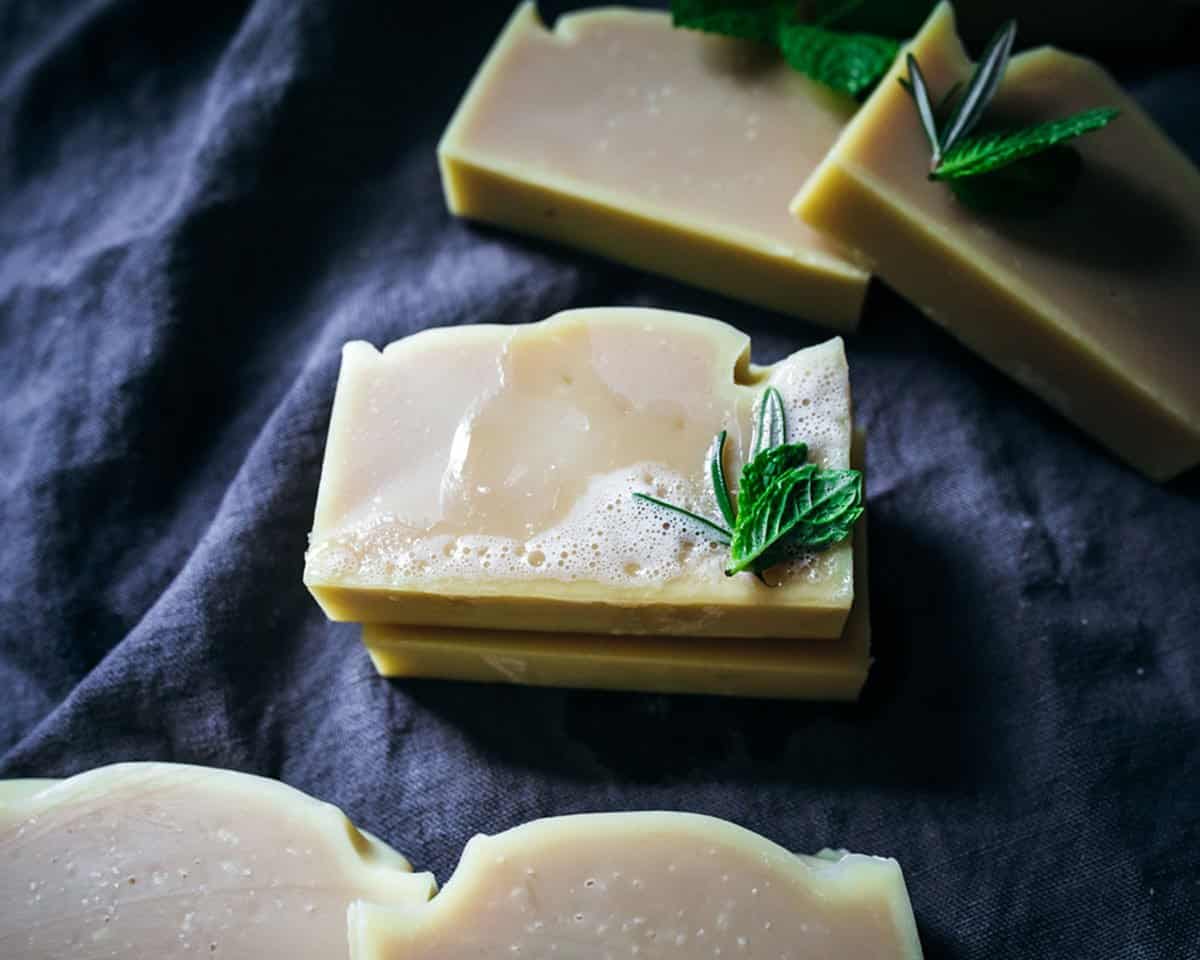
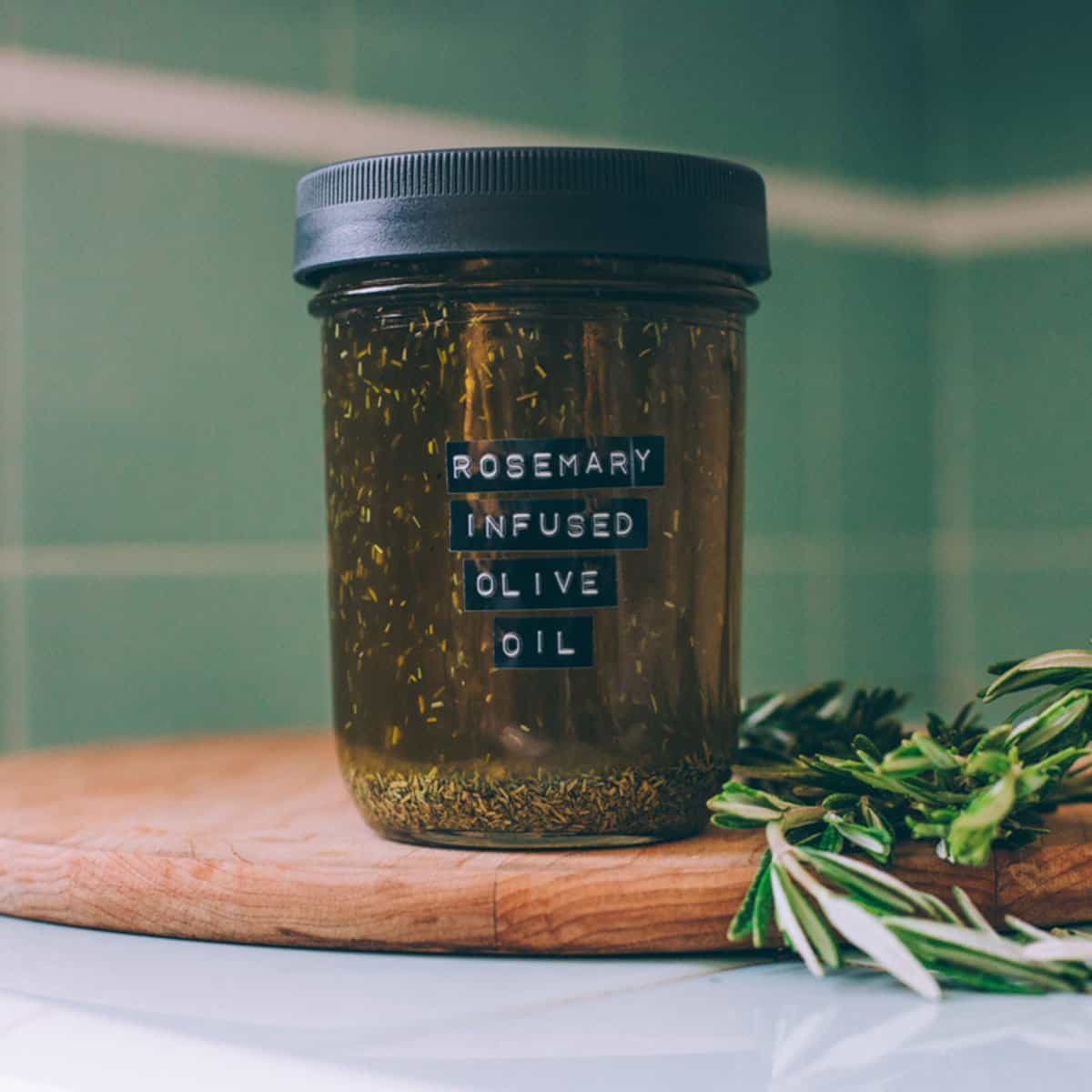
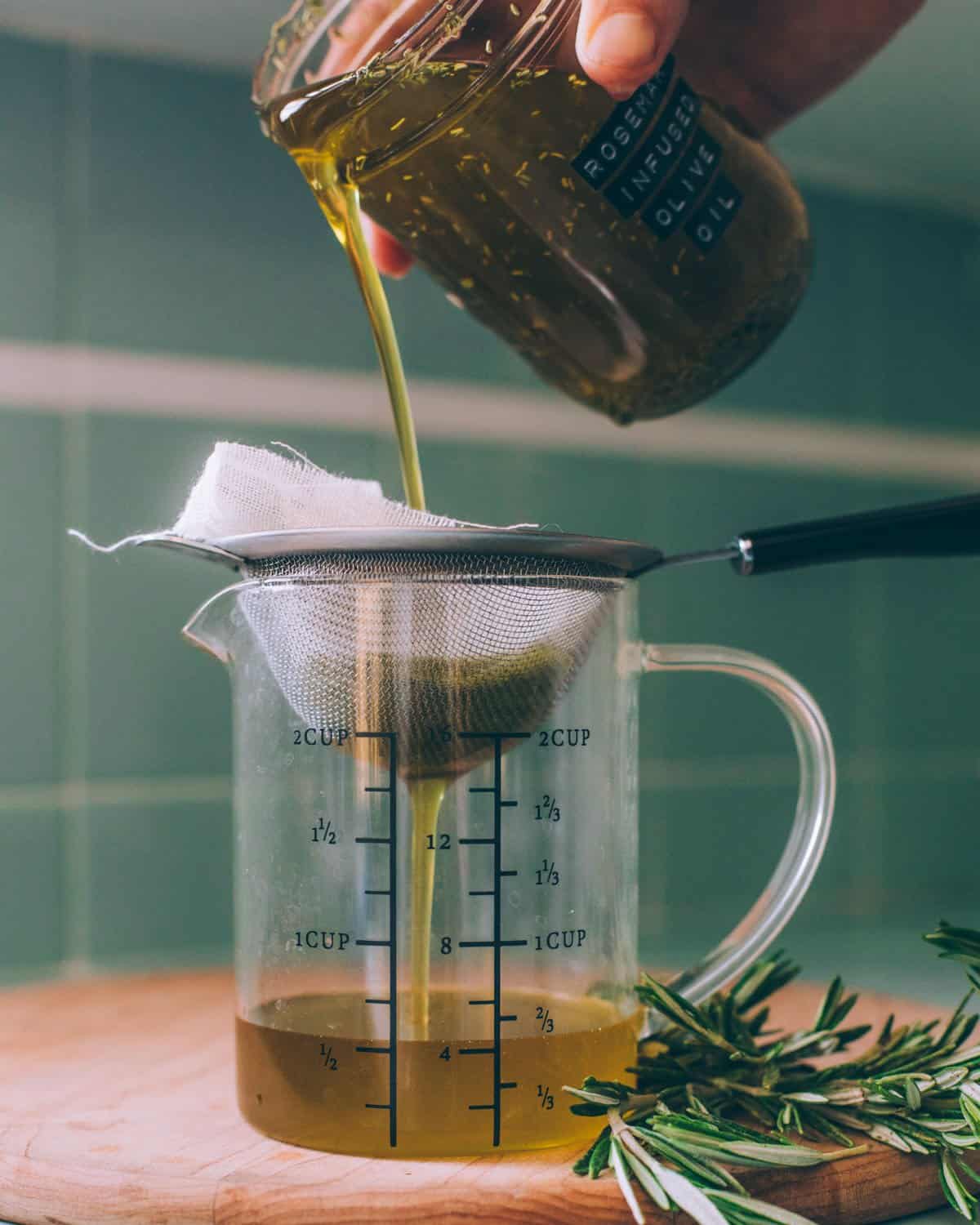
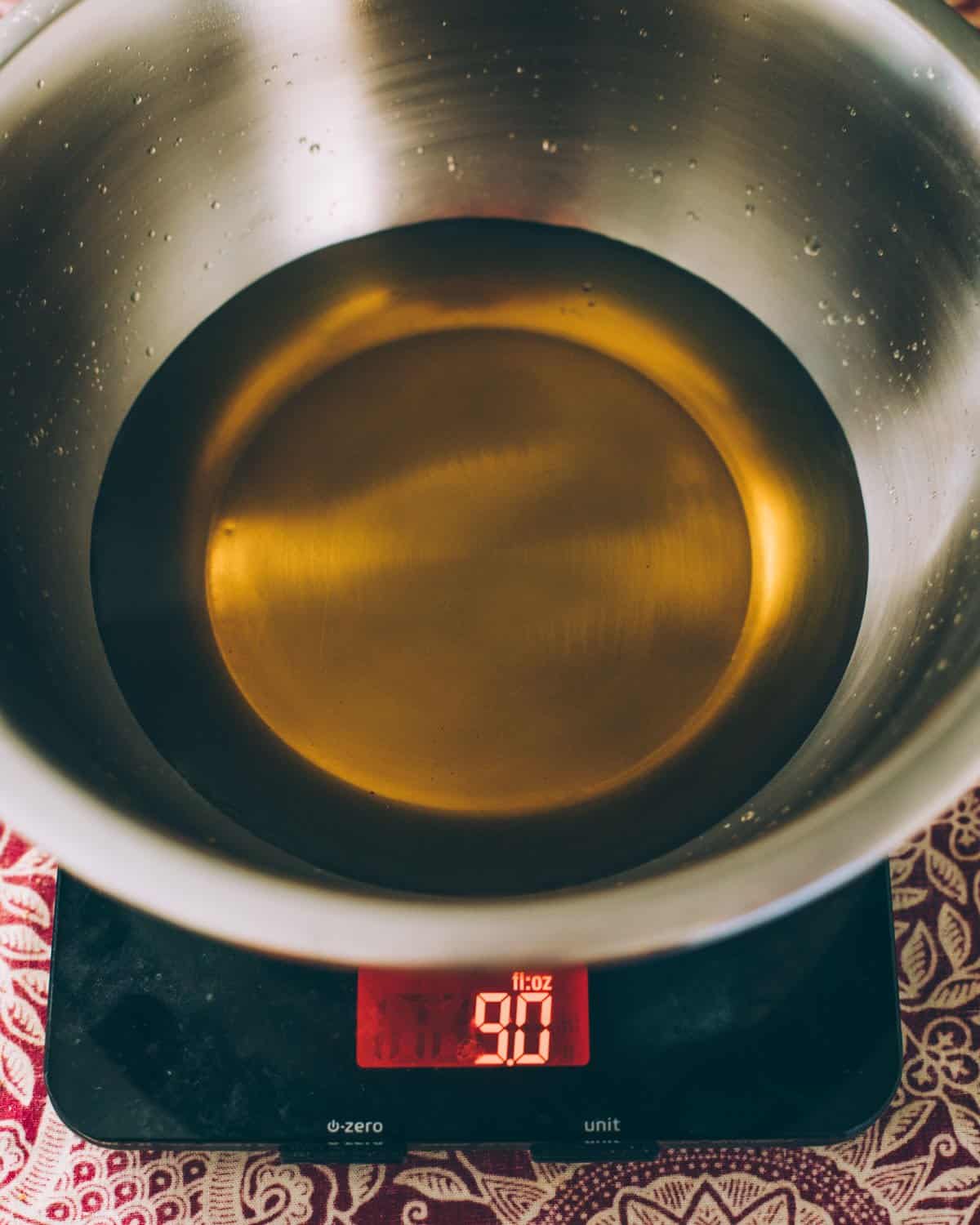
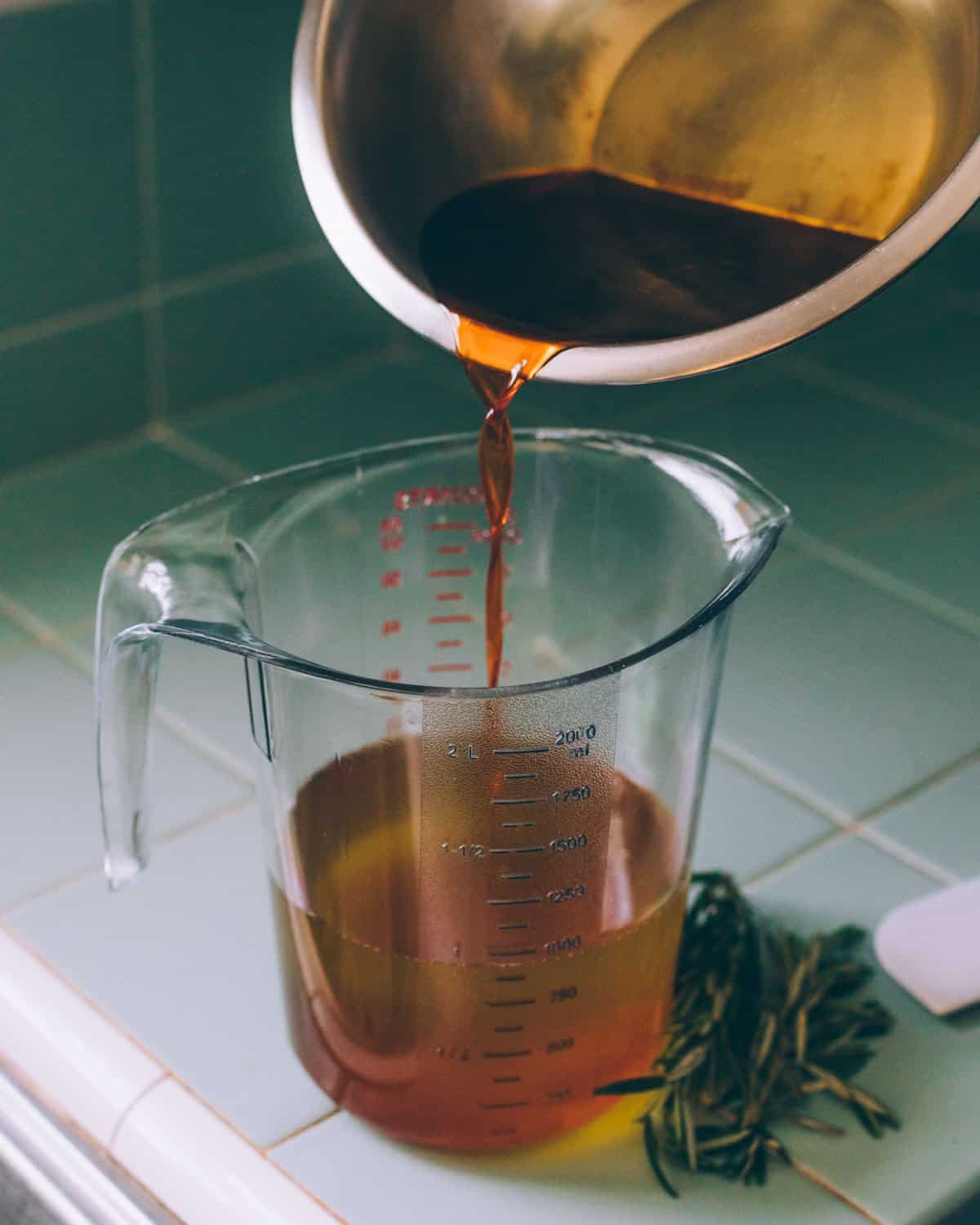
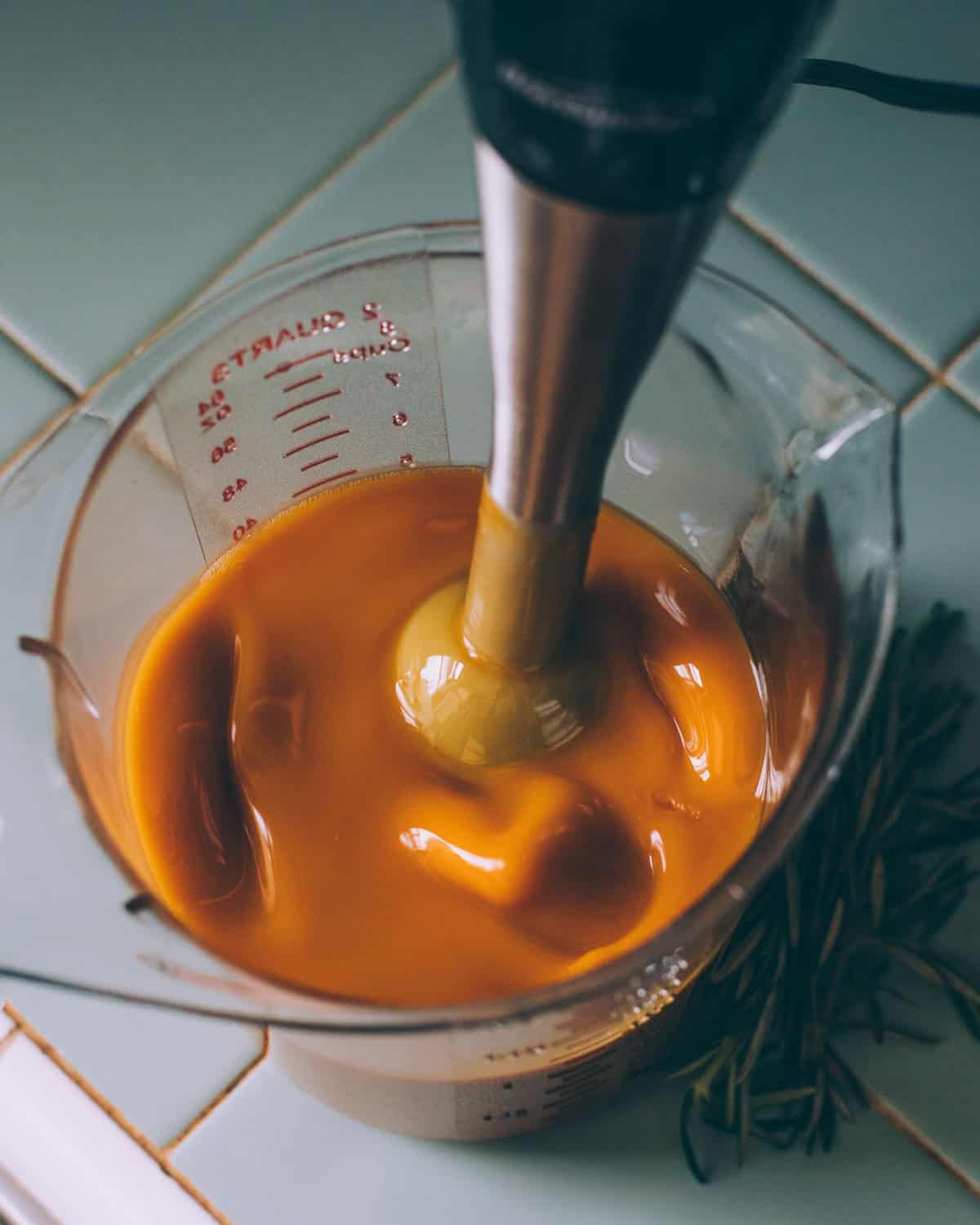
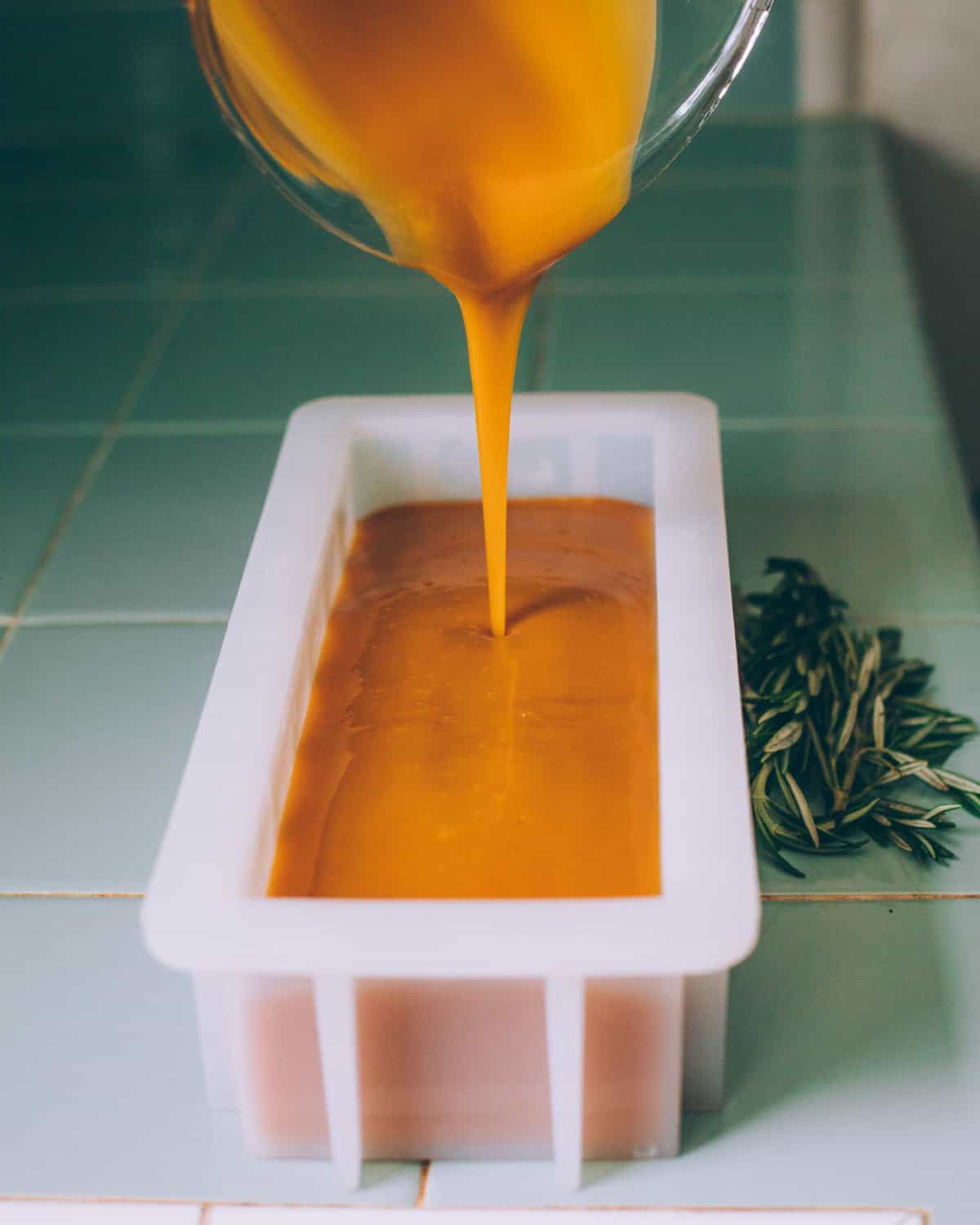
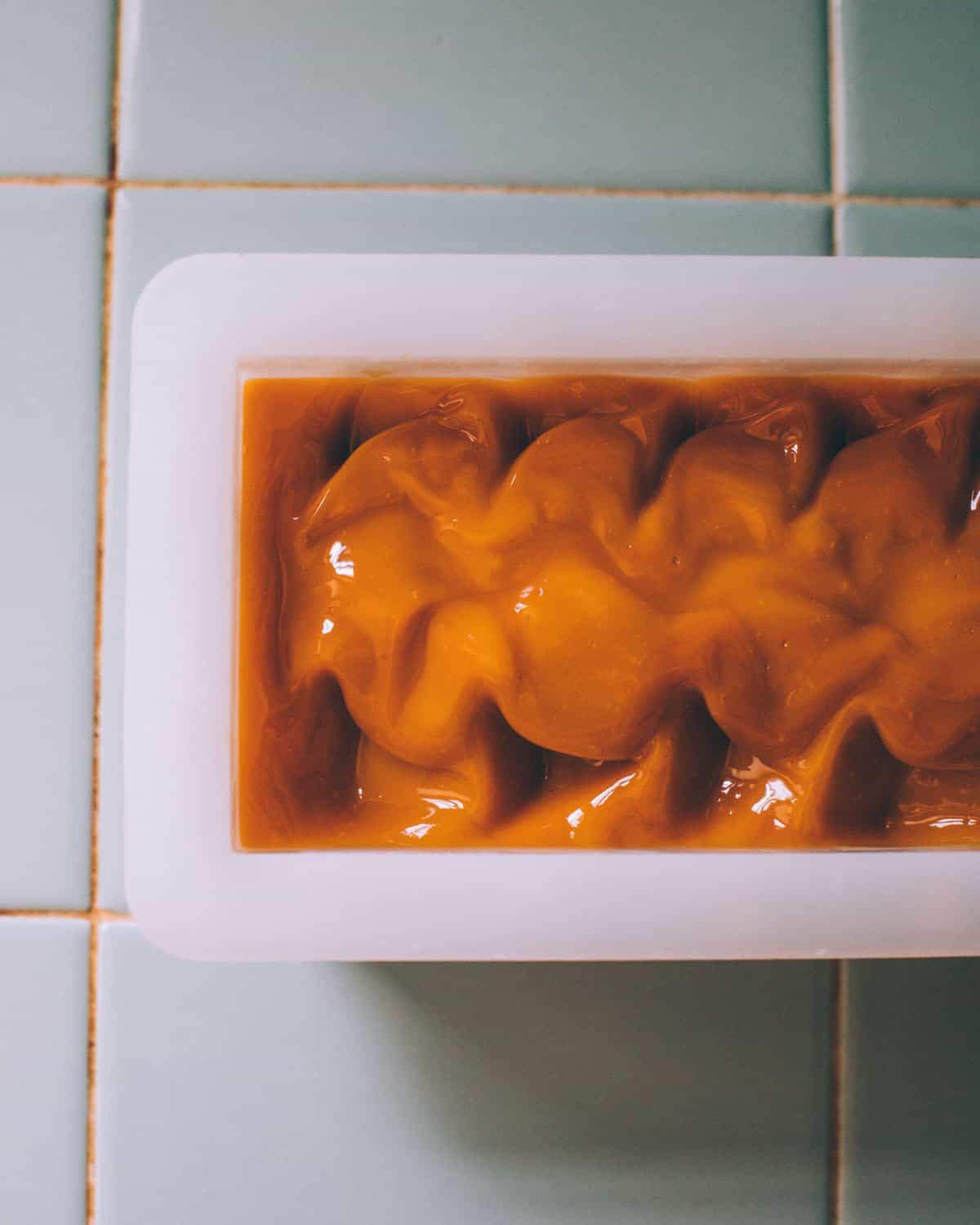
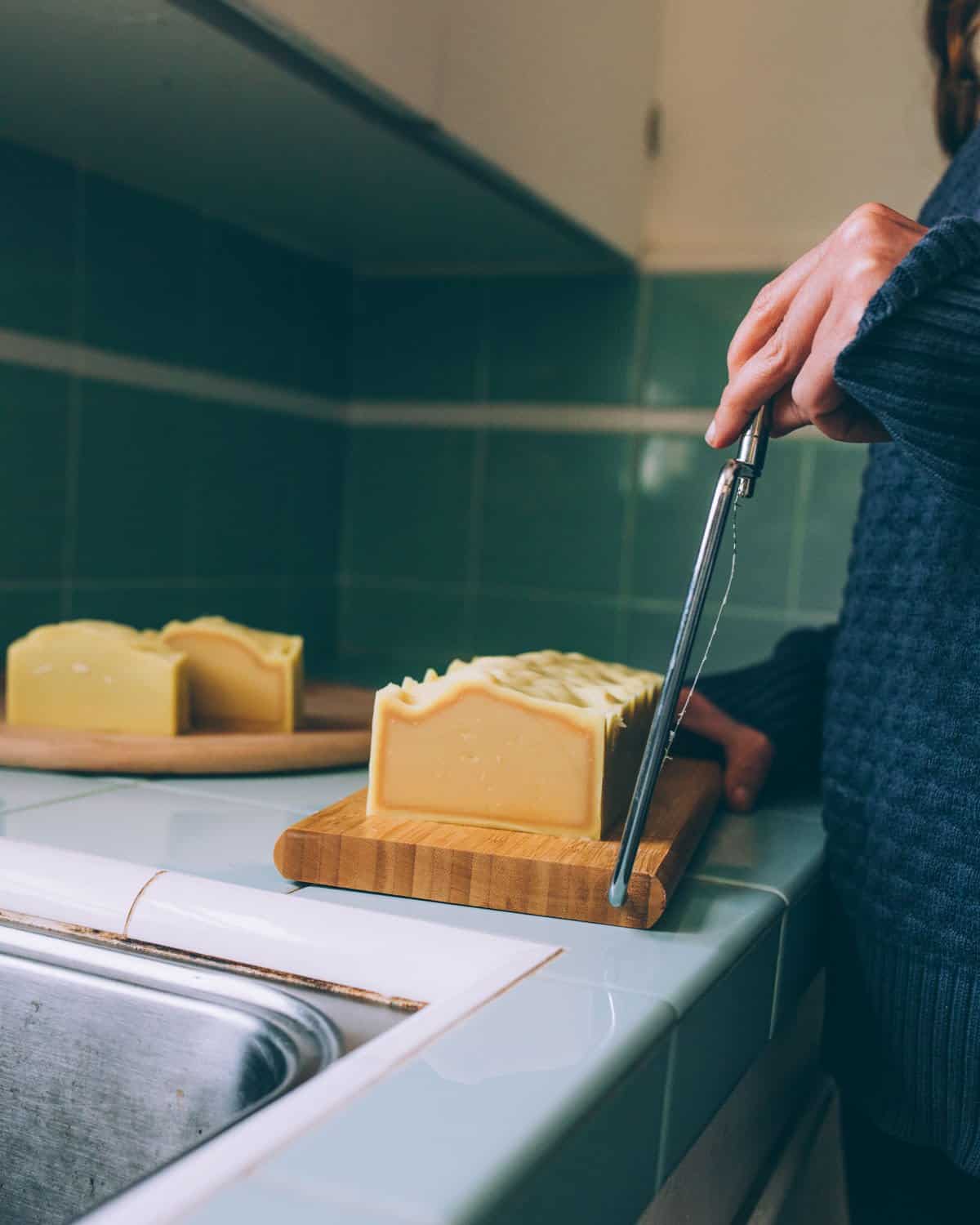
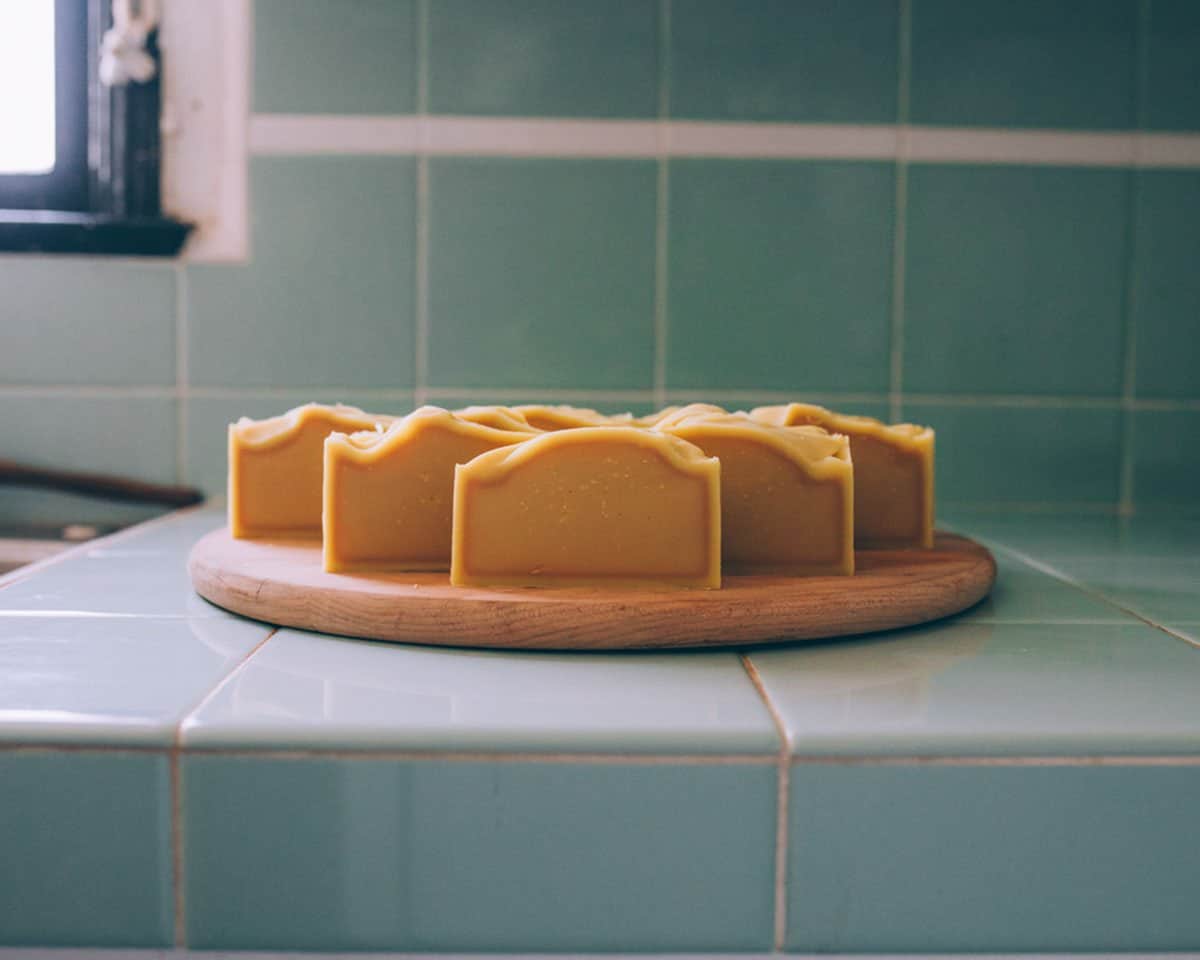
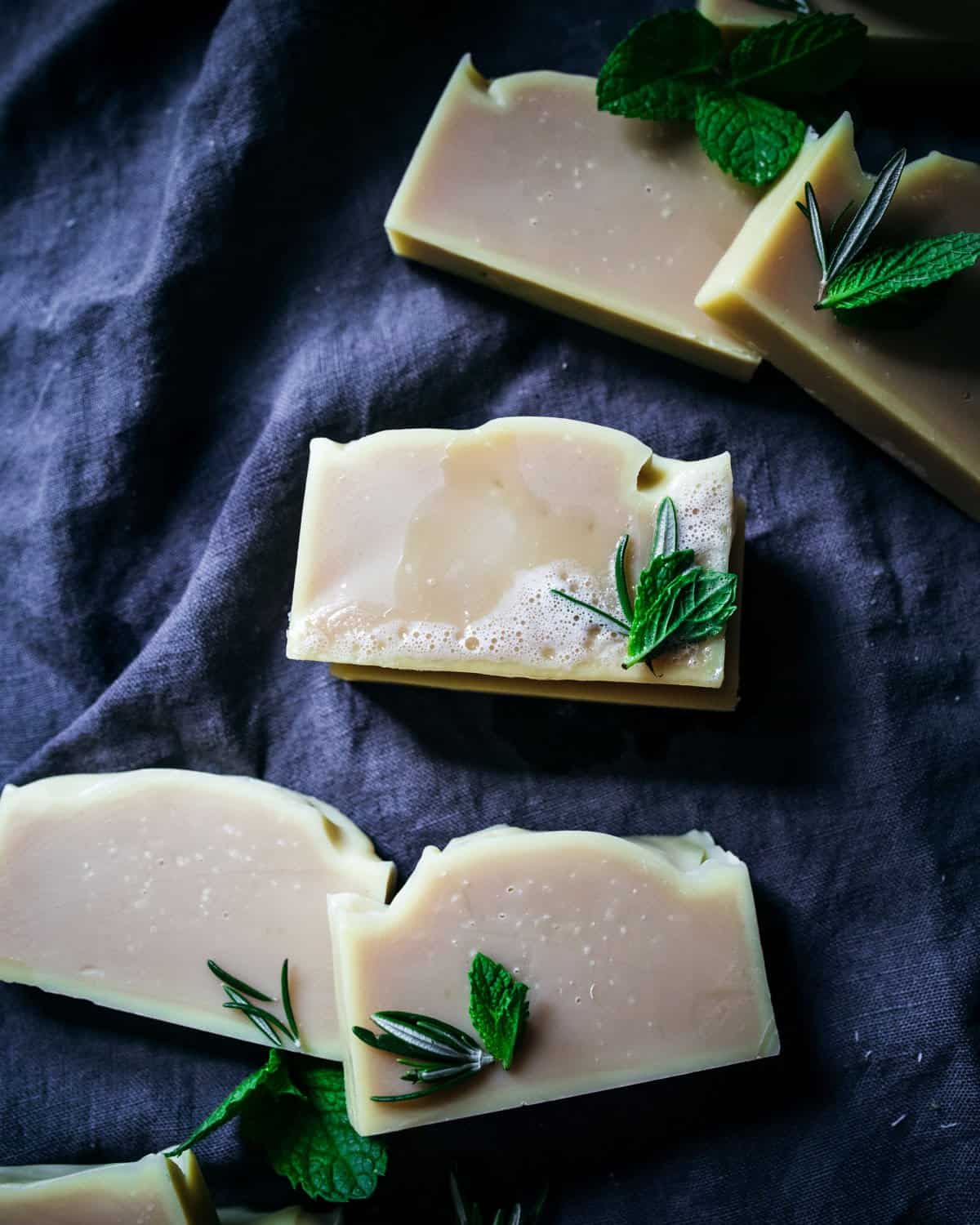
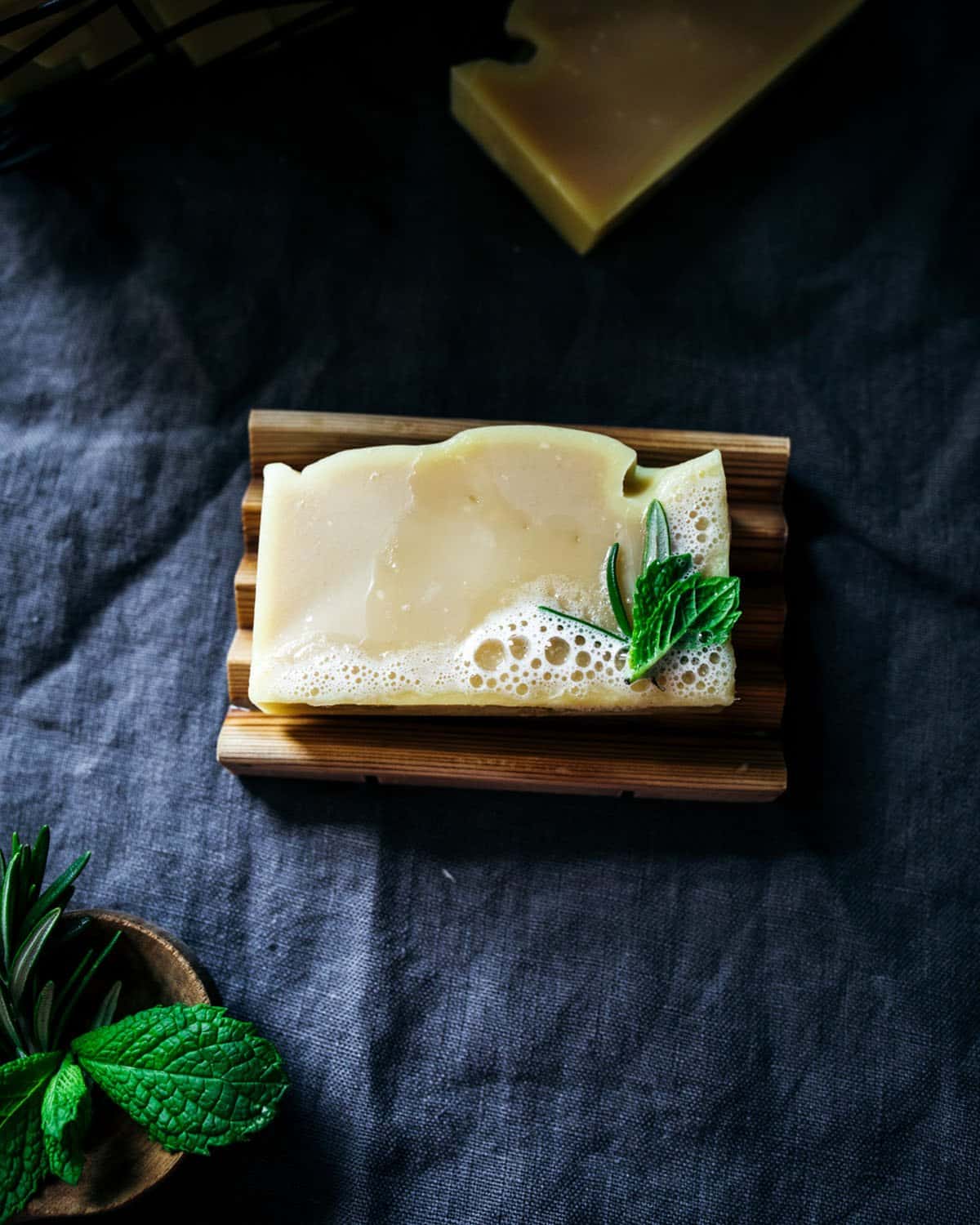


Hey Colleen! I am new at soap making and I have a few questions. Do you have problems with the scent going away in these bars? And what brand of peppermint oil do you use?
Hi Rosie. The scent was still obvious a month or so after making them, but honestly, I didn’t really keep track. I used essential oil from Mountain Rose Herbs. There’s a link in the ingredients listed on the recipe card.
Okay thank you and also would it hurt to use fresh mint? I guess I would have to use more?
This is an awesome recipe. I just have one question do you have a video tutoril of this?
I don’t, sorry!
I have trouble with the essential oil fragrance dissipating as the soap cures and I don’t have any fragrance when I go to use it. Would you have any suggestions?
Thanks
I find when making soap I use a full ounce of essential oil and the sent last much longer. You could try that.
Are there any homemade shampoo bars made without coconut oils and lye in them. I’m allergic to certain oils and butters (for skin and hair care). I use to use Dove which was a big no-no, now I have a rash and thinning hair. And I definitely don’t want to touch lye. My skin is just too sensitive.
Hi Shana. I’m sure there are some out there, but I haven’t done much research to find them.
Lye is what makes the oils turn to soap in the saponification process. All soaps are made with lye. the only other thing you could use is sodium lauryl sulfate. (a detergent base) which is very harsh on the skin.
I would suggest you research melt and pour bases to find one you like.
Shana all soap contains lye and oil. It has to by federal law. However, you can get or make soap with a higher oil content that will moisturize and soothe skin. Try avocado oils or shea and cocoa butters.
Cleansing bars are a chemical cocktail. Start googling ingredients and you will see what I mean. Learn to make your own, it’s safe and easy once you learn how to make it. Very cost effective. Remember on ingredients to check and find out exactly what it is, plant derived does not necessarily mean safe. Bleach is a salt derivative but you wouldn’t drink it.
What oils, additives and E.O is good for dry hair, oily hair and dry damaged hair that needs moisture? I have oily hair. I can’t find a recipe for those. I’m not new to soaping but I’m new to making shampoo bars, information is hard to find for what’s needed for each hair type.
Lots of asking about substitutions and doubling the size. Any time the amount or change of oil is done, the recipe needs to run through a soap calculator. You can find them online by doing a search. Different oils have different properties, some are more drying, or less bubbly, and even have a cleanliness value to them. Most posters will be using different molds also, so the soap calc (soapcalc.net is a good site to start) Or Brambleberry has a nice one also, and running your recipe thru the calc will give correct amounts for them. The term ‘trace’ is used when the mixture is just beginning to get thick, like super runny pudding and still pourable.
I’ve read that shampoo bars have to have a lower ph than regular cold press soap makes to be safe for hair. What is the ph of these bars and do you need an ACV rinse?
Hi Joan. I didn’t test the pH of these bars when they were made. I don’t use an ACV rinse, but if you’d like to, that’s fine.
Hi, I’m just wondering how hard this bar will be. I hate it when my shop bought bars disappear too quickly.
Hi there. It’s really hard to say. It’s as hard as a standard soap bar.
Interested if you made these shampoo bars what pH they ended up being. I have tested some of my shampoo bars and their pH is between 5-6. When I test the pH of this recipe, it is about 10, although not fully cured.
I’d like to double the recipe-do I need to modify any of the amounts of ingredients at all-or can I just double everything?
Great recipe! I’ve made it several times now!
Doubling will work fine!
Can you substitute hemp seed oil for the sunflower oil? Also, do you super fast this?
What does “mix until trace is reached” mean?
Trace is a term used in soap making that means, “blended to form an emulsion”. Mix until the mixture is emulsified.
Could you use only 1 type of oil if you are limited. In case of supply chain shortages. I can grow sunflower oil.
For sure!
I don’t know much about this stuff as I haven’t dared make soap with lye with the little people here. Could this be made from a melt n pour soap base by chance?
No, this recipe can’t be made as a melt and pour soap, sorry!
I don’t see why you couldn’t use a melt in pour and just add some rosemary essential oil and some peppermint essential oil to the strength you like and pour it into a mold. The benefit is in the oil that you are using
can you subsititute sunflower oil for safflower oil?
Of course!
Hi quick question, is this moisturizing enough to not use a follow-up conditioner?
If not, can you recommend a good diy recipe for conditioner?
Hi, Ashley. I use a homemade leave-in conditioner with these shampoo bars from Mountain Rose Herbs.